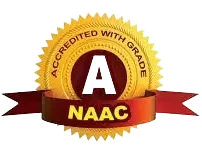Best Practice 2
- Title of the Practice
Sustained Academic Excellence and Multidisciplinary Education since 1972
- Objectives of the Practice
The primary objectives are to deliver high-quality education across multiple disciplines, achieve consistently excellent academic results, and cater to the educational needs of rural students. The practice aims to provide comprehensive education in Arts, Science, Commerce, Management, and Computer Science at the undergraduate and postgraduate levels.
- The Context
Since its establishment in 1972, Shri Pragya Mahavidyalaya has been dedicated to serving rural communities by providing accessible and high-quality education. The challenge was to maintain high academic standards and offer a diverse range of programs to meet the evolving needs of students. Ensuring that students from rural backgrounds receive the same quality of education and opportunities as those in urban areas was a critical aspect of this practice.
- The Practice
The college offers a multidisciplinary curriculum with undergraduate programs in Arts, Science, Commerce, Management, and Computer Science, and postgraduate programs in Arts, Science, and Commerce. The institution emphasizes a holistic approach to education, incorporating theoretical knowledge, practical skills, and ethical values.
Key components of this practice include:
- Qualified Faculty: Hiring and retaining experienced and dedicated faculty members.
- Modern Infrastructure: Providing state-of-the-art classrooms, laboratories, and libraries.
- Extracurricular Activities: Encouraging participation in sports, cultural events, and community service.
- Student Support Services: Offering counseling, career guidance, and financial aid to support students academic and personal growth.
- Continuous Improvement: Regularly updating the curriculum and teaching methods to align with industry standards and academic advancements.
- Evidence of Success
The college has a proven track record of academic excellence, with students consistently achieving top ranks in university examinations and a remarkable 97% pass percentage. Alumni success stories, including those who have pursued higher education and professional careers, further attest to the quality of education provided. The college’s commitment to serving rural students has resulted in increased enrollment and retention rates, particularly among students from disadvantaged backgrounds.
- Problems Encountered and Resources Required
Challenges included the need for continuous curriculum updates to keep pace with technological advancements and industry trends. Securing adequate funding for scholarships and infrastructural development was another concern. Resources required encompass funding for faculty development programs, modern teaching aids, laboratory equipment, and student support services.
- Notes (Optional)
Institutions aiming to replicate this practice should focus on building a strong academic foundation and continuously adapting to changing educational needs. Collaboration with industry partners for curriculum development and practical training can enhance the relevance and quality of education. Providing robust support systems for students, particularly those from rural or disadvantaged backgrounds, is crucial for their success.
These best practices at Shri Pragya Mahavidyalaya exemplify the institution’s dedication to fostering a well-rounded, inclusive, and high-quality educational environment.


